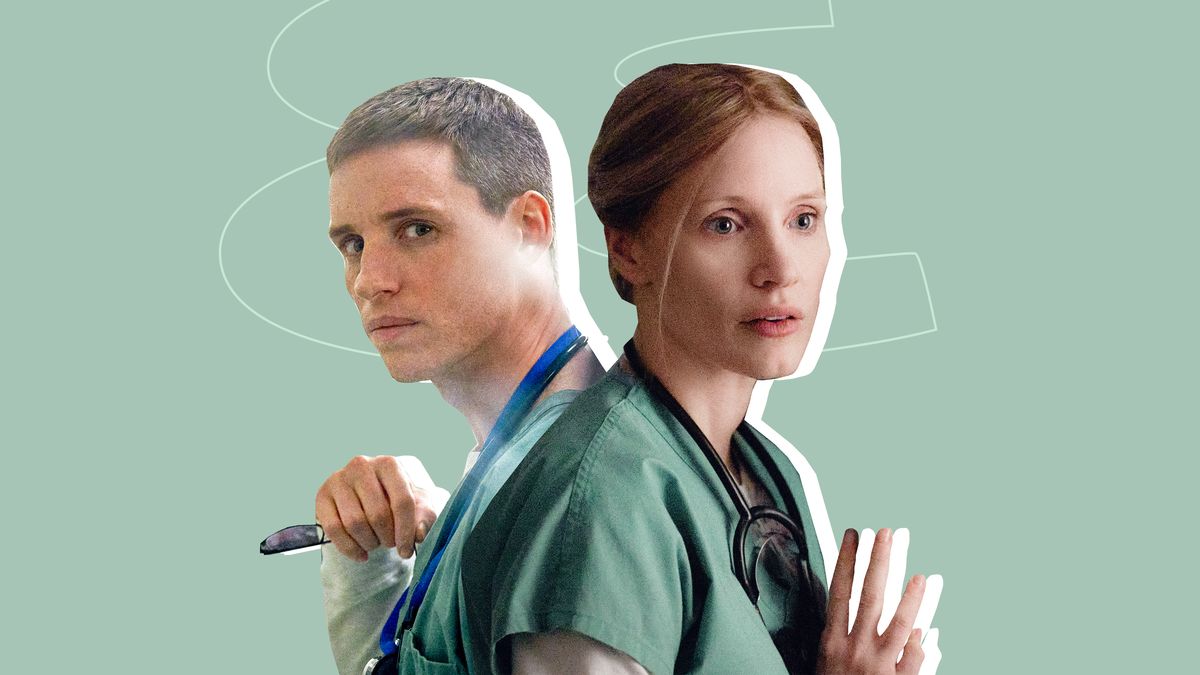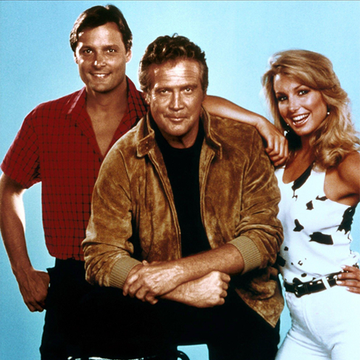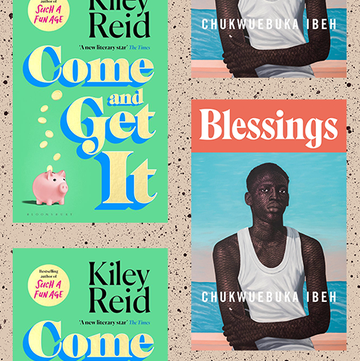One look at the trailer for Netflix’s newest thriller The Good Nurse, and it’s plain to see that the project is a dream gig for nearly anyone in the film industry. With lead performances by awards season mainstays Jessica Chastain and Eddie Redmayne, the film (streaming now) tells the near-unbelievable backstory of Charles Cullen—the former nurse who is now believed to be America’s most prolific serial killer.
If you're unfamiliar with the story: over the course of 16 years, in hospitals across New Jersey and Pennsylvania, Cullen murdered 29 of his patients by administering lethal doses of medicine. (Experts have since estimated that Cullen may have had up to 400 victims.) But when screenwriter Krysty Wilson-Cairns and director Tobias Lindholm were first propositioned with adapting Charles Graeber’s 2013 biography of Cullen, they had reservations. "I thought the story should be out there, but I didn't know how to tell it until the last third of the book where you are introduced to Amy Loughren," Wilson-Cairns recalls.
Loughren, the titular "Good Nurse," was Cullen's close friend and coworker—and the integral player in prompting him to confess to the crimes. Once Wilson-Cairn witnessed Cullen through Loughren’s perspective, she finally found her entry point. For Loughren, Wilson-Cairns and Lindholm served as two people she could finally trust to tell the story she’d been wary of sharing for so many years. "We do not sensationalise. We do not re-traumatise," Lindholm says of their choice to deviate from the approach of so many serial-killer films before them. The result? Impossible-to-forget performances by Chastain and Redmayne—whose chemistry brings to life every complicated bit of Loughren and Cullen's real-life relationship. "[Cullen’s] humanity was the reason that Amy connected with him. And that was the reason that we needed to insist on it," Lindholm says.
Over Zoom, speaking to the trio—Wilson-Cairns busting Lindholm for having too many whiskeys the night prior, and Loughren peppering in “love yous” between her collaborators’ responses—it seems unfathomable that Loughren’s story could've been told by any other team. It’s at least hard to imagine an interpretation as surprisingly hopeful as The Good Nurse.
ESQUIRE: Krysty, why did you make such a conscious choice to humanise Charles Cullen, rather than painting a sensationalised portrait of him as we often see in films about serial killers?
KRYSTY WILSON-CAIRNS: Well, look, the book The Good Nurse by Charles Graeber was obviously my way in... To me, I don't think I would ever want to tell or watch a story that focused solely on the serial killer, that went through his eyes, or glamorised what he did, or even tried to understand what he did because there is no understanding of it. I think the reason people want to know why he did it is because it makes us feel safe. Because we can put it in a box. You can say, “Oh, that's what was wrong with him and that's why he did it,” whereas the truth is much messier.
Reading the book, I was outraged. I was appalled. As soon as I got into [Amy's] section of the book, I began to understand Charles Cullen through her eyes. I began to really understand what she had done, as well as how it wasn't really credited at all. And, to be perfectly frank, I was raised by a working class single mom, and I very rarely get to celebrate that–to see them as superheroes. To me, that was the only way to tell this story.
I've noticed in all of your interviews, Amy, that you still refer to Charles as a friend. When this project began, were you ever wary of how he would be depicted?
AMY LOUGHREN: When I was approached, I was still dealing with the trauma of the shame of that. My shame was so intense that I was still having nightmares. I felt embarrassed to tell people that he was my friend. I used to think that it was a weakness that I did not see his darkness. But, after reading the script, and after working with Tobias, and having all of this time to really process it and go on my own spiritual quest, I came to understand through really, really working on this within myself that it is a superpower to only see the light in people.
And now, I'm not ashamed to say that I adored someone with mental illness. I think that all of us in this world have been touched by someone with mental illness. That does not mean that I did not feel that he needed to be put behind bars. It doesn't mean that I wasn't going to do absolutely everything to stop him. But the only reason he's behind bars right now is because I did adore him and because he felt safe enough to say, "I need to stop. I don't know how. And now I have someone that can just sit next to me, and hold my hand, and I don't have to do this alone." Holding people accountable for their behaviours with their mental illness is really the biggest message within this.
Krysty and Amy, how did you work together to uncover Amy’s side of the story?
KWC: Well, I started with Charles Graeber, the author of The Good Nurse. And I think, now, I sort of understand that he was vetting me before he would introduce me to [Amy] because he's very protective of [Amy’s] story... And, after I'd passed Charles Graeber's tests–which involved a lot of drinking, actually–I was introduced to Danny Baldwin and Tim Braun [the detectives whom Loughren had assisted in convicting Cullen]. And I think that was another stage of me being vetted. In fairness, I turned up at 23 years old, not a credit to my name, brand-new at this.
AL: Truth serum. Also, Danny and Tim and Charlie and I were so bonded. We had made a pact that we would not involve ourselves in anything that was going to sensationalise or put a spotlight on Charlie because we didn't want that. We didn't want him to become even more infamous. It was more about: how can we be [involved in] a project where we can all be proud? Where we can all say we did something to change the scope of what happened and shed a spotlight on the bureaucrats that tried to cover all of this up?
The film portrays a number of patients who are killed by Cullen. Were these patients based on real-life victims?
KWC: Tobias and I made a decision to not use any of the victims' real names, to not use any of the real victims, but to use amalgamations, to keep the methodology, to keep what Charles Cullen did the exact same, but to not portray people who we couldn't speak to, who we couldn't have access to, and who we couldn't get consent from.
I know that Jessica and Eddie were both required to go through their own nursing camp. What went into that decision?
TOBIAS LINDHOLM: I offered the opportunity to Eddie and Jessica. We were shooting at the end of the pandemic, so we weren't allowed at that point to go into real hospitals just because of COVID. So, we built our own little school hospital, and then we would hire nurses to teach Eddie and Jessica all the details.
And on top of that, I would then cast doctors and nurses and populate the ICU with real professionals so that all the people around Eddie and Jessica were working healthcare people that knew exactly how to behave in an ICU. That was both so that we would get real stuff on camera, but also for Eddie and Jessica to lean on, to ask questions to. And that gave us a lot of beautiful details, small things that just humanised the hospital world.
This film sheds light on how bureaucracy in the medical system allowed Charles to maintain his job for so many years. What kind of impact do you hope that this film will have upon people’s opinions of the U.S. medical system?
TL: Well, I'm Danish. I'm from a social democratic country with free healthcare. And, in many ways, we think that we have figured it all out–which we haven't. We also have systemic troubles and people caught in these systems that seems to lack humanity. And so, I hope that everybody will be inspired by Amy and start to live up to the responsibilities. We as individuals have to speak up and make a difference in these systems that seem to turn against us if we don't.
AL: I think that it's such a complicated subject to begin with. I started nursing way back in the dark ages, in the early eighties. And back then it was different. The way that we worked was different. It was always very team-related, and you were very focused on what was going on with the patients. I think a lot has changed in how we're capitalising off of people’s suffering.
We started hiring true CFOs and CEOs that were business majors and had no interest in making life better for the patients, but making life better for shareholders. As we got farther and farther away from the bedside for decision making, that's when we lost our souls. So, I'm hoping that at least [the film] will bring out a conversation about how we get these bedside nurses back to making the decisions for patients and nurses. I hope that I can have a little bit of a voice in that now.
Amy, in the film your character is advised by doctors to take a leave from her nursing job due to a life-threatening heart condition. But she’s unable to do so because she still needs to work for another year before she can get health insurance. It highlights such a common catch-22 for so many Americans.
AL: I really hope that we can get to a point where we stop looking at health insurance as a political struggle and start looking at health insurance as a right. I know that it's our capitalistic society that has allowed these insurance companies to truly run our politicians. And yes, this is not a political film, but unfortunately, something like health insurance, our country has politicised. So, it would be nice to be able to bring this back to the people and really highlight how other countries do this. And that it works.
TL: I used to be a social worker at mental institutions around Denmark before I started making films. And what I could see there over the years was that, even though [healthcare] was free and paid by taxes, they were still cutting down. There were still so many financial cutbacks that made it nearly impossible for a lot of the professional psychiatric nurses there to really do their job. And that is key in any system, is to not let the system take over, but actually believe in the individuals in these systems.
As a single mother and someone who was battling a life-threatening condition, Amy, the decision to involve yourself in this investigation put you at risk. Did you have any hesitation before deciding to assist Detective Baldwin and Detective Braun?
AL: I was absolutely terrified in so many ways. But I had this long conversation with my daughter after the detectives left my house. She was 11 at the time, and her entire life would be turned upside down... She said, "I don't care about any of that. He's hurting people, mom." And it was just like, “Why am I second-guessing myself?” This 11-year-old has such a distinguished and exemplary moral compass, and here I am, just like the bureaucrats, even questioning it. And I had to shake that off for a minute. But yeah, it was an 11-yea- old that made this decision.
Amy, we see in the film the moment when you realise that Cullen’s medication withdrawal records aren’t adding up–and, ultimately, that's when you realise that he is likely the culprit of this string of patient deaths. Can you walk me through that moment?
AL: Danny [Baldwin] was actually the only one in the room with me. And when the risk manager left the room, he just decided, "You know what? We don't have much. I'm just going to put it all out there on the table." And there were several things in that paperwork that were so blatant that there was absolutely no reason that he would've taken out the medications that he took out except for something sinister. It was just so obvious. And it was just like what you see in a movie; everything just comes down to that pinpoint of knowing your entire life is about to change. It was terrifying.
Amy, one of the most moving scenes in The Good Nurse is undoubtedly the confession–which sees your character show so much compassion towards Charles, even draping your sweater around him. Was that scene just as accurate?
AL: That was true–everything that you saw in there, the way that we were interacting. It was a lot longer. I think we were together for a couple of hours in that situation. I walked in the room, and he was in scrubs. And I just remember thinking, "My God, he's going to be in scrubs for the rest of his life." And I saw a scar on his arm that I had never seen before, because he always wore long sleeves or had a sweater on. And I was like, "What is that?" And he was like, "Another one of my failures in life. I can't even kill myself properly."
So, I knew that he wanted that covered up. He was shaking and very, very cold. I just instinctively took my sweater off to cover him, and to also give him back his privacy. I knew he was covering that for a reason. He didn't want people to see it, and I wanted to protect that. So, yes, Krysty and Tobias captured that. And gosh, to think that they took that extremely complicated, long afternoon and condensed it down to this scene that is so beautifully done. It's pure freaking artistry. It was very real. It was very, very real.












